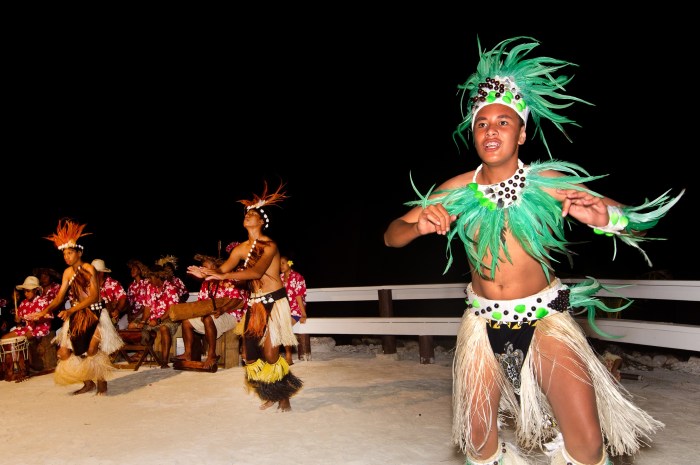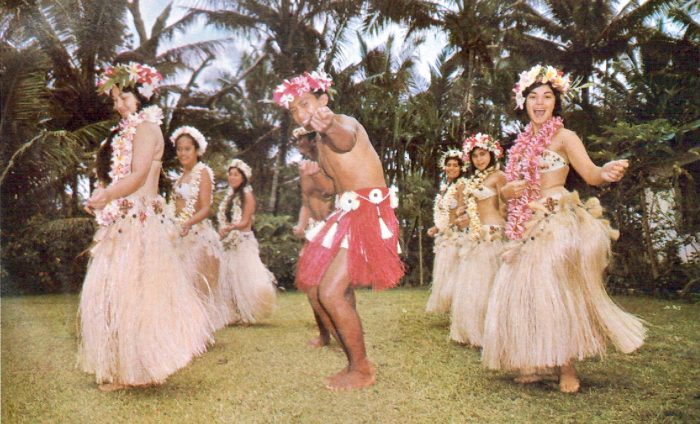Unleashing the Rhythms of the Pacific
How to dance cook island style – Imagine yourself on a tropical island, surrounded by crystal-clear waters and swaying palm trees. The sun is shining, the breeze is gentle, and the music is calling you to move. This is the essence of Cook Island style dance – a vibrant and lively expression of the rich cultural heritage of the Pacific islands.
Are you looking to master the art of cooking Texas style ribs? Look no further than this comprehensive guide on how to cook texas style ribs. From choosing the right cuts of meat to perfecting the seasoning and smoking process, this resource will take your BBQ skills to the next level.
The Heartbeat of the Islands
Cook Island style dance is more than just a series of movements – it is a celebration of life, love, and community. The dances are deeply rooted in the traditions of the islands, with each movement telling a story or conveying an emotion. From the graceful swaying of the hips to the powerful stomping of the feet, every step in Cook Island dance is infused with meaning and purpose.
Tips for Mastering Cook Island Style
If you’re ready to unleash your inner island dancer, here are some tips to help you master the art of Cook Island style dance:
1. Feel the Music
The key to dancing Cook Island style is to let the music guide you. Listen to the rhythms of the drums and the melodies of the ukulele, and let them inspire your movements. Feel the music in your soul and let it flow through your body as you dance.
2. Embrace the Spirit of Aloha
Cook Island style dance is all about sharing love and joy with others. Embrace the spirit of aloha – the spirit of kindness, unity, and respect – and let it shine through in your dancing. Connect with your fellow dancers and the audience, and let your movements express the warmth and hospitality of the islands.
3. Learn the Traditional Steps, How to dance cook island style

Each Cook Island dance has its own unique steps and movements that have been passed down through generations. Take the time to learn the traditional steps and master the techniques that make each dance special. Pay attention to the details, such as the placement of the hands and the angle of the hips, to truly embody the spirit of the dance.
4. Practice, Practice, Practice
Like any art form, mastering Cook Island style dance takes time and dedication. Practice regularly to improve your technique, build your stamina, and perfect your performance. Whether you’re practicing alone or with a group, make the most of every session to hone your skills and become the best dancer you can be.
What Makes Cook Island Style Dance Unique: How To Dance Cook Island Style
Cook Island style dance is known for its fluid movements, rhythmic footwork, and expressive gestures. The dances are often performed in groups, with dancers moving in harmony to create a mesmerizing visual spectacle. Each dance tells a story or conveys an emotion, making it a powerful form of artistic expression.
Are you ready to learn how to cook Texas style ribs? Check out this comprehensive guide on how to cook Texas style ribs to impress your friends and family with mouthwatering barbecue. From selecting the perfect cut of meat to mastering the art of smoking, this tutorial covers everything you need to know to create delicious, fall-off-the-bone ribs that will have everyone coming back for more.
The Solution: Embracing the Culture of the Islands
By learning to dance Cook Island style, you are not just mastering a new skill – you are immersing yourself in the vibrant culture of the Pacific islands. Through dance, you can connect with the traditions, values, and beliefs of the islanders, and gain a deeper understanding of their way of life. Dance becomes a bridge that connects you to a world of beauty, passion, and creativity.
Detail Information: Dive Deeper into the World of Cook Island Dance
To truly appreciate the art of Cook Island style dance, it is important to understand the history and significance of the dances. Each movement, gesture, and rhythm has a story to tell, and by delving into the cultural roots of the dances, you can gain a deeper appreciation for their beauty and complexity.
From the graceful swaying of the hips in the Ura to the powerful stomping of the feet in the Tamure, each dance reflects a different aspect of Cook Island life and culture. By learning the stories behind the dances, you can enrich your own dancing experience and bring new depth and meaning to your performances.
Conclusion: Dance Your Way to the Heart of the Pacific
Cook Island style dance is more than just a series of movements – it is a celebration of life, love, and community. By mastering the art of Cook Island dance, you can connect with the rich cultural heritage of the Pacific islands, express your creativity and passion, and share the spirit of aloha with the world. So put on your dancing shoes, feel the music in your soul, and let the rhythms of the islands carry you away on a journey of joy and discovery.
FAQs:
1. What are the traditional instruments used in Cook Island style dance?
In Cook Island style dance, traditional instruments such as drums, ukuleles, and guitars are often used to create the rhythmic melodies that inspire the dancers.
2. How can I learn Cook Island style dance if I don’t live on the islands?
There are many dance schools and online tutorials that offer lessons in Cook Island style dance, allowing you to learn and practice the dances from anywhere in the world.
3. What are some common themes in Cook Island style dance?
Common themes in Cook Island style dance include love, nature, storytelling, and celebrations of life and community.
4. Is it necessary to have prior dance experience to learn Cook Island style dance?

While prior dance experience can be helpful, anyone can learn Cook Island style dance with dedication, practice, and a love for the music and culture of the islands.
5. How can I incorporate Cook Island style dance into my own cultural traditions?
You can incorporate Cook Island style dance into your own cultural traditions by adapting the movements and music to reflect your own heritage and values, creating a unique fusion of styles that celebrates diversity and unity.
